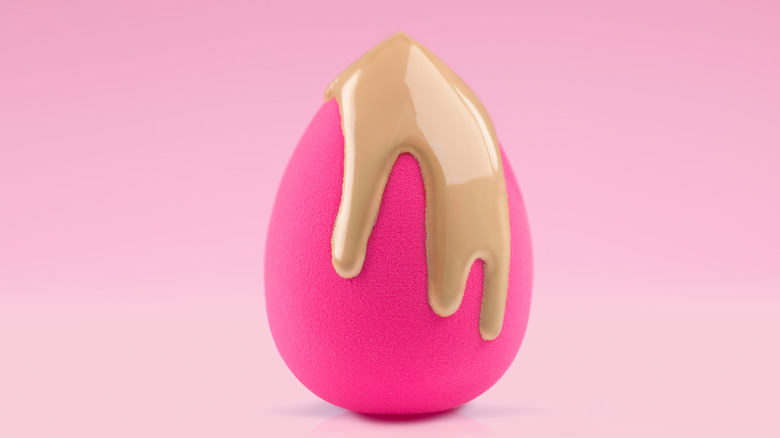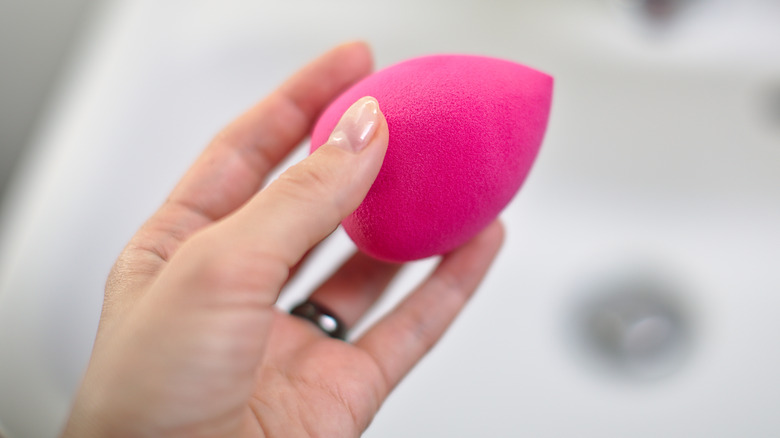How To Know If Your Beautyblender Is Growing Mold
We may receive a commission on purchases made from links.
More than a decade ago, the Beautyblender came to revolutionize the makeup industry. Different to conventional makeup sponges that absorb a lot of makeup and leave undesirable traces, the Beautyblender's smooth texture helps you create flawless makeup looks without wasting products. After the major success of this beauty tool, dozens of variants came into the market but none compares to the quality and results of the Beautyblender. This isn't a cheap product, at $20 per sponge, which is an additional incentive to take care of it.
According to the product instructions, you're supposed to wet it before using it and wash it after every use (via Health). Even if you're really diligent with the care routine, you must change your Beautyblender every three months so that you aren't using a worn-down product. If not, you're more likely to find tears and mold in your sponge. How can you know if your sponge has mold, and how can you avoid it?
Don't use a moldy Beautyblender
If your puffy makeup sponge has some black spots on it, we regret to tell you there's mold growing on it. There's several reasons why this could be the case but one of the most common ones is that you're storing it wet. "When you remove oxygen and light from anything that is moist, you have the opportunity for mold and bacteria to start forming," Rea Ann Silva, creator of the Beautyblender, told Health. Avoid storing your damp sponge in an enclosed bag and instead, opt for a breathable mesh to keep your Beautyblender on the go. However, you should always try to dry your sponge before putting it away. You can do that by placing it in a cool ventilated area, according to Ebony.
Refrain from using a moldy Beautyblender because the mold and bacteria on it would go directly to your face. In case you want to remove the mold from your sponge, try using the brand's cleansers.

